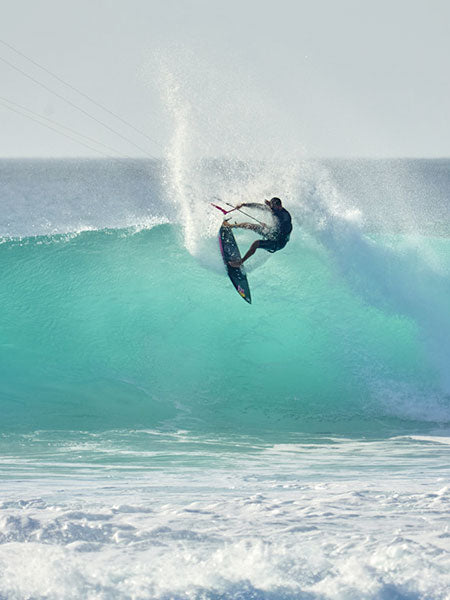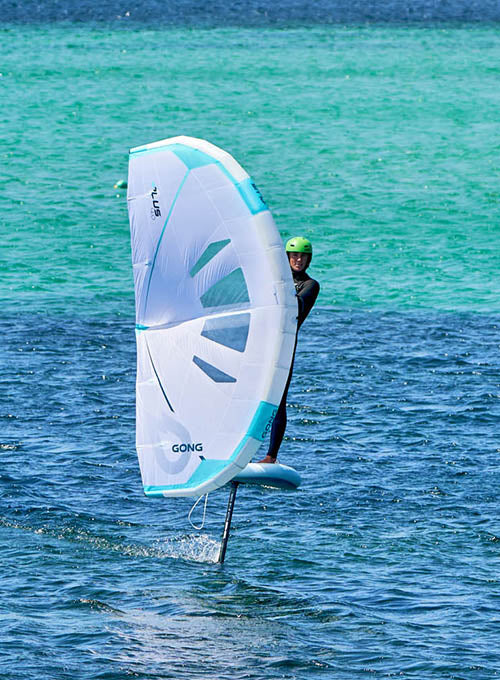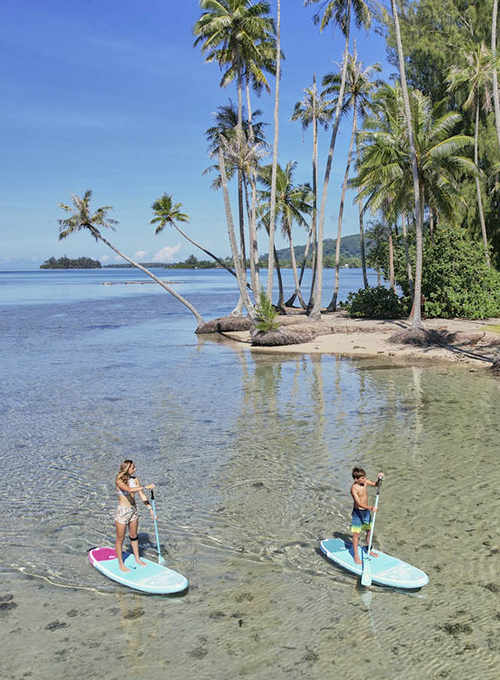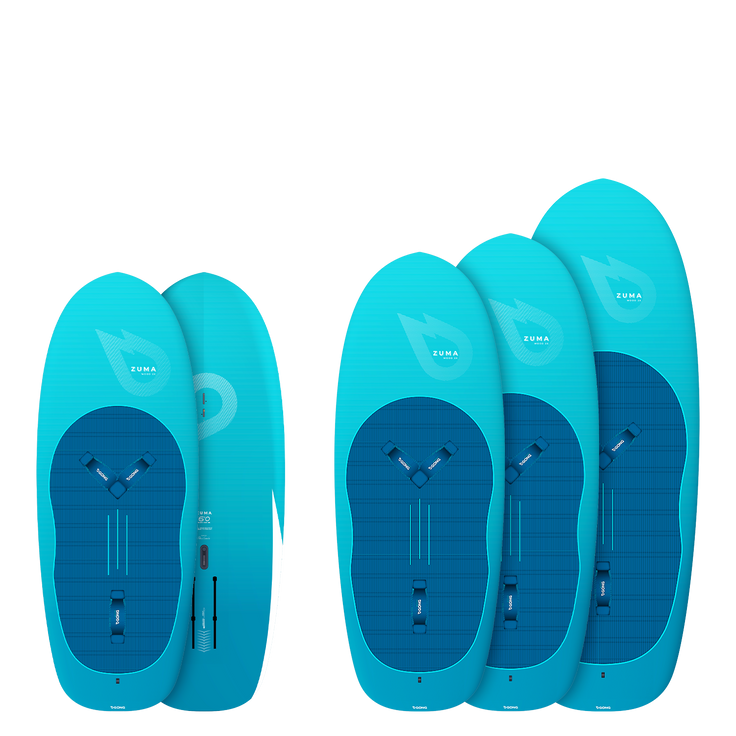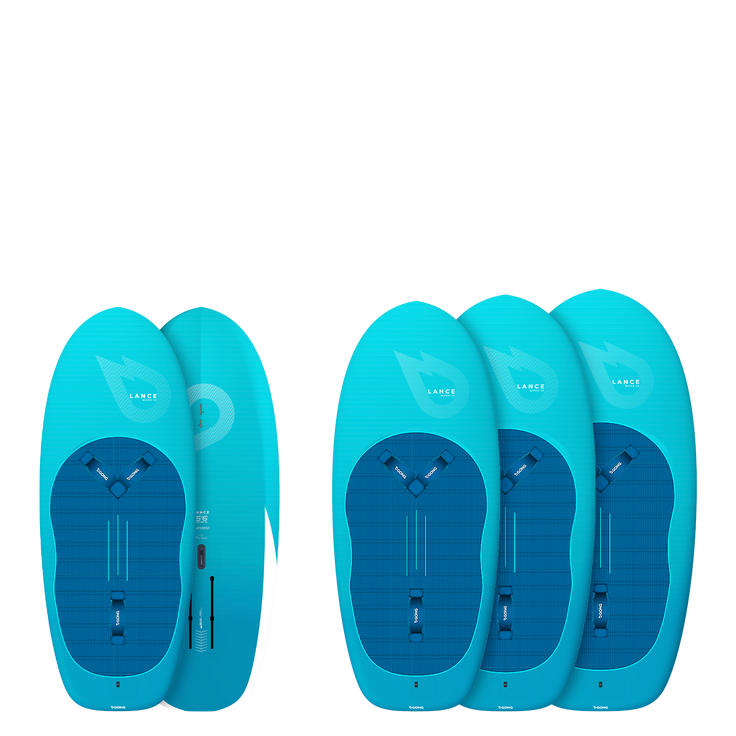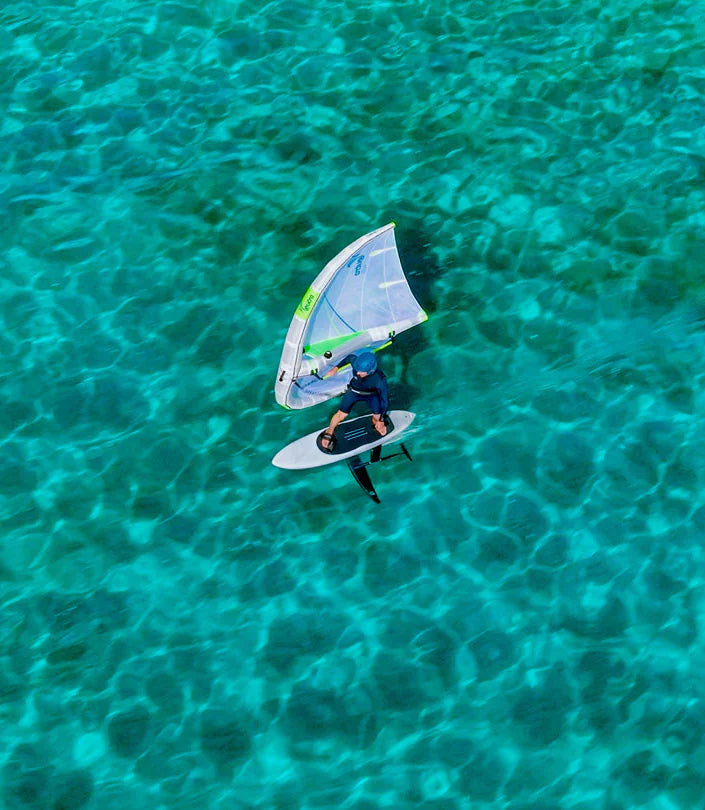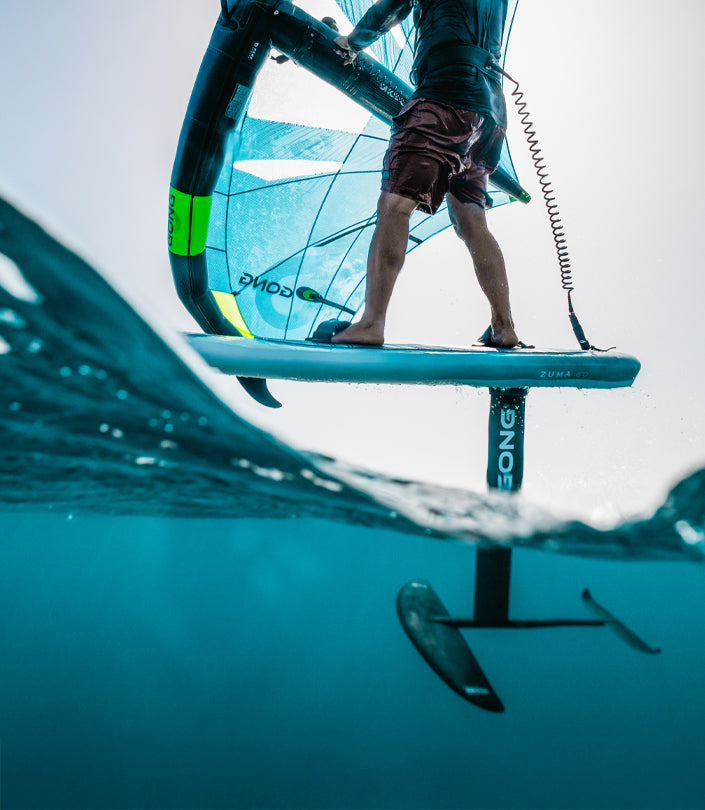The choice of a quiver primarily depends on your level, your style of practice, and your goals on the water. For many, a single board is enough, the one that will accompany you everywhere. This is especially true for beginners, who will benefit from a versatile board to progress at their own pace without getting distracted.
However, as you progress, you may feel the urge to add a second board to your quiver. For example, pairing a larger volume board for light wind sessions with a more compact and radical board for days with stronger wind allows you to cover a wider range of conditions and never be left on shore.
For those looking to maximize their performance in each discipline, opting for a quiver focused on specific programs might be the key. A dedicated wave riding board for surfing, paired with a freerace or freestyle board for full-speed sessions or explosive tricks, forms a winning duo for those who want to excel in each style.
Finally, if you live in a specific spot, such as a lake where the wind is often light, you may prioritize a board optimized for light wind, while keeping a more radical option for the days when the conditions improve. Similarly, riders who want to enjoy the water every day, regardless of the conditions, can expand their quiver with a Stand Up Paddleboard for windless days, or a surfboard to glide on the waves when the wind is lacking.
A well-thought-out quiver ensures you get the most out of every session, while staying prepared for changing conditions and exploring all the pleasures of water sliding.
Examples of Quivers by Region:
- For the Mediterranean:
The Mediterranean often means light winds or extreme conditions. A good quiver might include a Cruzader Point LW FSP Pro for light wind days, allowing early takeoff and maximizing sessions. In addition, a Stunt FSP Pro would be ideal for Mistral or Tramontane days, offering the necessary responsiveness for freestyle when the wind is strong.
- For Northern Germany:
On the Baltic or North Sea, conditions can change quickly, with strong winds and often choppy water. An ideal quiver might include a Mint FSP Pro, perfect for its versatility and ability to adapt to changing conditions, and a Lethal FSP Pro for surf sessions in the small waves found at some spots. This setup allows for riding in all conditions and enjoying more intense sessions.
- For England:
England offers varied spots, with strong winds and beautiful waves on the west coast, and calmer conditions in the estuaries and bays. A Lemon FSP Pro would be perfect for playing in the waves and enjoying moderate wind days. To complement this, a Racer FSP Pro would provide high-speed fun, making the most of strong, steady winds.
- For a rider based in central Europe (Germany, Switzerland, Austria):
For riders who mostly ride on lakes and seek versatility, a Cruzader Diamond FSP Pro is perfect for light wind days, offering smooth glide and easy takeoff. Complementing this with a Mint FSP Pro allows for enjoying every breath of wind and having a more radical board for days when the wind picks up. This duo covers all conditions on lakes and promotes rapid progression.
- For Brittany and the French Atlantic Coast:
Brittany offers a wide range of conditions, from light winds to powerful winter storms. A balanced quiver could include a Lethal FSP Pro for surfing the beautiful waves on the wild coast and a Cruzader Diamond FSP Pro for lighter wind days when you want to glide over long distances. A SUP might also be a great complement for windless days.
A well-thought-out quiver ensures you make the most of every session, stay prepared for changing conditions, and explore all the pleasures of water sliding.
Why is a Surfboard Essential in Your Quiver?
Whether you're passionate about wing foiling, foil, or SUP, having a surfboard in your quiver is essential. Surfing is the mother sport of all the sliding disciplines we practice today. It helps you understand the fundamentals of wave reading, connection with the ocean, and refining your sense of glide. Additionally, on days when the wind is lacking, surfing is the perfect alternative to never be stuck on land and continue enjoying the water.
For experienced surfers, a high-performance surfboard, such as a fast and responsive shortboard, a fish for small wave sessions, or a twin fin for retro sensations, is a great choice to keep challenging yourself. A good fish or twin fin will offer smooth glide and a unique style, perfect for creative sessions in the waves.
Beginners or those seeking a gentler approach to surfing can opt for more forgiving boards, such as a mini-malibu or a Batmob from our range, which offer reassuring stability for first sessions. Mid-length boards are also a perfect option to combine maneuverability and easy paddling, allowing for rapid progression.
Finally, for smaller waves or for those who love pure glide, a longboard or retro longboard is a fantastic option. These boards allow for smooth riding on the smallest waves with elegance and offer a more relaxed, contemplative approach to surfing.
In summary, incorporating a surfboard into your quiver not only connects you to surf culture and the history of sliding but also expands your horizons as a rider. You’ll fully enjoy every session opportunity, even when the wind is absent. For sliding enthusiasts, surfing is the essential discipline that will enrich your ocean experience.


